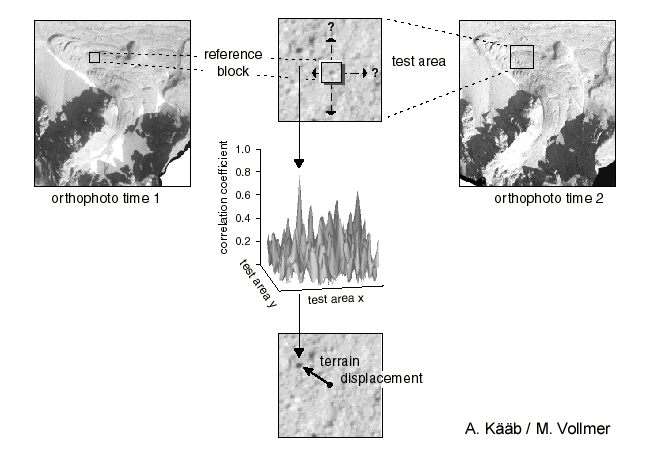
Glaciers can also readily slide on a soft sediment bed that has some water in it. This water may come from glacial melting due to the pressure of the overlying ice, or from water that has worked its way through cracks in the glacier. Sliding occurs when the glacier slides on a thin layer of water at the bottom of the glacier. Internal deformation occurs when the weight and mass of a glacier causes it to spread out because of gravity. Glaciers move by internal deformation of the ice, and by sliding over the rocks and sediments at the base. Valley glaciers flow down valleys, and continental ice sheets flow outward in all directions. Under the pressure of its own weight and the forces of gravity, a glacier will begin to move, or flow, outwards and downwards. Thus, dense glacial ice has no air bubbles, but contains trapped air nevertheless. At greater depth (hundreds of meters), the air in these bubbles is squeezed into the crystal structure of the ice. This compaction compresses more air spaces out of the snowpack, and compacts the remaining air into bubbles. These ice crystals can eventually grow to become several centimeters in diameter.Īs compression continues and the ice crystals grow, the air spaces in the layers decrease, becoming small and isolated. The snow and firn are further compressed by overlying snowfall, and the buried layers slowly grow together to form a thickened mass of ice.Įach year’s new snowfall continues to compact the underlying layers, and the snow grains become larger ice crystals randomly oriented in connected air spaces. If the accumulated snow survives one melt season, it forms a denser, more compressed layer called firn. In polar and high-altitude alpine regions, glaciers generally accumulate more snow in the winter than they lose in the summer from melting, evaporation, or calving. Credit: Twila Moon, NSIDC GrowingĪ glacier forms when snow accumulates over time, turns to ice, and begins to flow outwards and downwards under the pressure of its own weight. Ogives, or semicircular bands, can be seen in the distance.

For more than 70 years glaciologists have been studying, teaching, and learning about the Icefield through the Juneau Icefield Research Program. Glacial ice flows down the valley, draining ice from the Juneau Icefield in southeastern Alaska.
#Glims nsidc archive#
NASA National Snow and Ice Data Center Distributed Active Archive Center (NSIDC DAAC).Greenland Today & Antarctic Ice Sheet Today.A part of CIRES at the University of Colorado Boulder


 0 kommentar(er)
0 kommentar(er)
